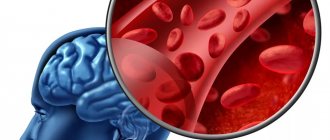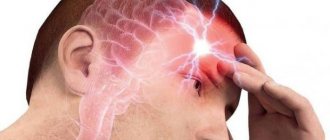Vegetovascular dystonia (VSD) is a syndrome that can be caused by the characteristics of the patient’s body or provoked by various external and internal factors. VSD often worsens in the fall. Attacks that occur every day exhaust a person and disrupt the quality of life. Drug therapy for exacerbation of VSD is often ineffective.
Doctors at the Yusupov Hospital provide preventive treatment for patients suffering from vegetative-vascular dystonia. Neurologists, endocrinologists, therapists, and gastroenterologists collectively decide on the patient’s examination regimen. Severe cases of vegetative-vascular dystonia are discussed at a meeting of the Expert Council, in which candidates and doctors of medical sciences take part. The medical staff is attentive to the wishes of patients and takes into account their emotional background.
Vegetovascular dystonia: symptoms and treatment
The difficulty of making a diagnosis lies in the whole spectrum of symptoms. The disease skillfully mimics; two people with vegetative neurosis can have completely different complaints. However, there are three types of pathology:
- VSD of normotensive type. Characterized by abnormal heart rhythm.
- VSD of the hypertensive type. Characterized by increased blood pressure. The disease carries a risk of stroke, especially in older patients. With this type of VSD, the work of the heart is corrected by reducing heart rate with medication.
- VSD of hypothetical type. Characterized by a decrease in blood pressure. The patient experiences weakness, often fainting. Therapy is carried out with atropine and aminophylline. Along with medications, the patient is prescribed vitamins and medications with antioxidants. Green tea is beneficial.
The first signs of the disease are manifested by the following symptoms:
- From the side of blood vessels and the central nervous system.
Increased heart rate, headache and tinnitus, unusual sweating, muscle pain and trembling throughout the body, including the limbs.
- From the mental point of view.
Panic and obsessive states, sudden changes in emotions, anxiety and suspiciousness.
It is impossible to cover all the signs within the scope of this article (there are more than 150 of them). But our goal is not to make a diagnosis online. If you notice the first alarming symptoms, consult a doctor. The main thing is to be wary of VSD and understand that the disease can manifest itself with a whole range of symptoms.
Origin and history of development
Symptoms are characterized by typical deterioration, negative changes and disruptions in the functioning of internal organs. Often all this occurs covertly, unnoticeably, but under favorable conditions for the pathology it can manifest itself suddenly and very painfully, in the form of poorly controlled attacks. As a rule, at the most inopportune moment for this.
All this becomes quite realistic for one simple reason - disruption of the functioning of the autonomic nervous system, the vascular component. According to statistics, the problem is diagnosed in almost half of adults under 40 years of age. For some reason, most likely related to the structural features of the body, the disease is most often diagnosed in the fairer sex than in men.
There are many reasons for vegetative-vascular dystonia that occurs in women and the development of pathological changes. Chronic changes can be triggered by almost any disease, lifestyle, anxious emotional state, shortness of breath, circulatory disorders, dizziness, cardiovascular problems, physical activity, fainting, palpitations, gastritis, osteochondrosis, neurosis and diabetes. The highest risk category usually includes young people during pregnancy and childbirth. Deviations can appear already at the stage of puberty of the child, as well as during menopause. The cause may be frequent stress at home and at work, brain injuries, uncontrollable fatigue and constant, progressive fatigue, and disruption of the endocrine system.
Finally, everything can be triggered by aggressive climate changes, temperature changes and blood pressure surges.
The most common signs and symptoms
The signs of manifestation and dynamic progression for each citizen may be different, significantly different. It is all the more difficult to diagnose signs of vegetative-vascular dystonia in women with 100% accuracy and in a timely manner. Therefore, experienced therapists, cardiologists and practicing neurologists urge you to be attentive to yourself and, at the slightest shift away from everyday normal sensations, immediately undergo an in-depth medical examination. The more ideally and at an earlier stage the diagnosis is made, the more competently the recovery course and subsequent matters can be organized.
At the initial stage, it is necessary to accurately determine which category of pathology the identified relapse belongs to. The following symptoms and signs of vegetative-vascular dystonia are distinguished:
- associated with a central nervous system defect;
- cardiological;
- caused by physical exhaustion;
- with indentations in thermoregulation;
- initiated by respiratory, viral, seasonal problems.
Establishing and determining the type of VST is the function of the health worker. He performs it based on the results of the examination and clinical analyzes of the symptoms of VSD. And only after this can you prescribe certain drugs and medications. It is everyone’s responsibility to know how and what will manifest themselves in a given problem and to react promptly by registering at the clinic for a medical examination and medical support. Pay special attention to the following pathological factors:
- the appearance of tingling, heaviness, breakdowns in the heart area, pulse fluctuations, irregularity when counting contractions;
- increased blood pressure (up to levels of 170/95 mm Hg);
- a sharp and significant, spasmodic increase in heart rate, extremely unpleasant and painful vibration in the temples, the formation of hyperemia on the skin of the face and neck;
- very low pressure up to 90/60 mm Hg. st).
In a number of situations, not one, but several parameters of typical signs may appear; sometimes they will not be clearly expressed, but in any situation, this is the basis for enrolling in a medical institution and a full check.
What will help with dystonia
In case of moderately severe disorders of autonomic regulation, proper rest and relaxing procedures (massage, spa, aromatherapy, salt room) will help you improve your general condition. Ideally, this is a vacation of at least 14 days, in your usual climate zone. At this time, it is important to observe the resort regime: walks, afternoon rest, timely going to bed at night.
For people with VSD, there is a medicine that relieves symptoms and gradually helps the body establish balance in autonomic regulation - Eltacin®. It is a complex of amino acids cystine, glycine and glutamic acid. Amino acids activate metabolism in the body and prevent cells from suffering from hypoxia in stressful situations. Therefore, regular use of Eltacin® significantly improves your condition and helps you gradually get rid of VSD.
Folk remedies and methods
In the treatment of this disease, methods from traditional medicine are quite actively and successfully used. Over hundreds of years, healers and herbalists have developed their own unique approach to neutralizing the effects of illness. There are dozens of fairly effective and efficient fees that really help people. Useful herbs and components are the roots of leuzea, angelica, mistletoe and radiola, some parts of St. John's wort and, of course, the roots of valerian.
The only recommendation is that before you start taking such herbs, consult your doctor!
The benefits of certain types of juices, which are mixed with natural wine and honey and taken in certain proportions, have been proven. First of all, these are the juices of carrots and radishes, lemon and even garlic.
Preventive measures are the most important component of VSD treatment
People suffering from VSD must limit themselves in certain areas, building their lives in such a way as not to provoke exacerbations and minimize the possible consequences of a surge in the activity of the disease. Below are the main recommendations:
1) Particular attention is paid to a rational and balanced diet. It is necessary to give up spicy and salty foods, fried foods, flour, fast food, etc. as soon as possible.
2) Ensuring high quality sleep. It is important that its duration is at least 8 hours, and the bedroom should be well ventilated.
3) Sports activities, physical activity, moderate exercise. Half-hour walks and 15-minute exercises are a must!
4) On weekends - walks in the fresh air, at least 1-2 hours (and also on holidays and in any weather).
5) Moderate work activity.
6) Giving up bad habits (alcohol, smoking, etc.).
Causes of VSD
Although vegetative-vascular dystonia may seem like a condition that appears out of nowhere, there are always reasons for it.
Intoxication.
Smoking, working in hazardous industries, living in an environmentally unfavorable region, previous infectious diseases, burns are factors that lead to poisoning of the body with chemical or biological toxins.
Chronic or acute stress.
Both prolonged exposure to conditions of increased nervous stress and acute stress - a sudden traumatic event - can lead to unbalanced functioning of the whole organism. The same applies to a long period of lack of sleep and rest, which in itself can become stress for the whole body.
Hormonal disorders.
Puberty, pregnancy, childbirth, diseases of the endocrine glands, and taking incorrectly selected oral contraceptives are factors that can become a trigger for VSD syndrome.
Perhaps the most difficult thing to determine is VSD when it is of genetic origin. When family members suffer from unpleasant symptoms from generation to generation, this may seem like some kind of individual characteristic and be perceived as the norm, although in fact the situation requires medical attention.
Cause
Symptoms of VSD may appear in early childhood or adolescence, but it is not a major concern. The peak may occur between 20 and 40 years of age, with women being more susceptible to the disease than men.
Among the reasons for the appearance of such symptoms are:
- Intrauterine hypoxia,
- Abnormal birth
- Infections suffered in childhood
- Stress, neuroses,
- Excessive physical activity
- Traumatic brain injuries, neuroinfections,
- Hormonal changes during pregnancy or adolescence,
- Features of the constitution, heredity,
- The presence of chronic pathologies.
In addition, factors such as excessive alcohol or coffee, high mental stress, physical or mental, can contribute to the development of VSD symptoms. Temperament and character traits also play a role. Balanced sanguine people are least likely to suffer from VSD, but choleric and melancholic people are at risk.
Mixed and hysteroid crises
Mixed crisis - characterized by a combination of the above symptoms.
Hysterical (fainting-tetanic) crisis - characterized by tachycardia, hysterical hyperventilation, increased blood pressure, tremor and local convulsions, but there may also be generalized tetany.
Emergency care for mixed and hysteroid crisis
- Inject intravenously or intramuscularly 0.5% seduxen solution 0.05 ml-0.1 ml/kg, but not more than 2.0 ml.
- In case of incomplete relief of a convulsive state, administer 20% sodium hydroxybutyrate solution 0.25-0.5 ml/kg intravenously.
What symptoms may accompany VSD
Dizziness and fainting
Cold extremities, tremors of arms and legs
· Sudden mood swings, panic attacks
Overreaction to minor to moderate stress
· Poor ability to adapt (difficulty with acclimatization, decreased work efficiency with changes in the workplace, insomnia and headaches with changes in daily routine)
Attacks of fever, sweating for no reason or in response to emotions
· Heartburn and increased peristalsis, abdominal cramps, constipation in response to overwork
Main symptoms of the disease:
- Sore throat and pharynx;
- Bubbling in the neck area;
- Unreasonable cough.
They tend to disappear quickly, the person gradually calms down and the feeling of discomfort goes away.
Doctors distinguish several forms:
Anesthesia.
Symptoms - sensitivity in the throat area decreases or disappears, a person experiences difficulty swallowing saliva or food, there is tension in the area of the sternum, collarbones and larynx. The neurological reaction corresponds to that which occurs during hysteria. The patient has difficulty swallowing, there is a shortage of air, he tries to inhale more oxygen.
Hypesthesia
. The symptoms of hypoesthesia are similar to the symptoms of anesthesia, but the former are less pronounced. The sensitivity of the mucous membrane of the throat and pharynx is reduced, discomfort is felt during swallowing. If symptoms do not go away for a long time, this can lead to asphyxiation by ingested food or water.
Hyperesthesia.
A neurological symptom of this nature is accompanied by spasm and high sensitivity. A person with this type of neurosis complains of itching, burning in the throat and pharynx, and eating is difficult. Symptoms of nasopharyngeal neurosis are also present; the patient not only finds it difficult to speak, but also to breathe. Typically, hyperesthesia occurs immediately after stress.
Hyperalgesia.
This form has the following symptoms: regular pain in the throat, pharynx, thyroid gland. Eating and drinking intensifies the symptoms.
Paresthesia.
The symptoms of this form vary from patient to patient. They include the clinical picture of hyperesthesia (itching, sore throat). Patients feel large foreign objects in the throat, sometimes even complain about the absence of their esophagus. While eating, the sore throat intensifies and is accompanied by a headache. Symptoms are diagnosed in people with nervous disorders or those with a labile psyche. Laryngeal neurosis of the type paresthesia has been recorded in patients during menopause.
Additional symptoms may include:
- Dryness of the mucous membrane of the throat, saliva begins to be released in a smaller volume;
- Paroxysmal dry cough, which forces the patient to resort to cough medicines; the medicines relieve the patient’s condition for a short time or do not alleviate the patient’s condition at all;
- Feeling of a coma. The “presence” of a lump in the pharynx or throat forces a person to refuse food;
- Hoarseness of voice. Its changes provoke respiratory diseases. However, the symptom goes away within a few days, while in patients with throat neurosis it does not disappear, but persists for a month;
- Complete loss of voice. The symptom occurs after a hysterical attack;
- Imaginary swelling of the neck. Patients often feel their neck, looking for various “bumps” and thickenings on it.
Options used in the treatment of vegetative-vascular dystonia in women
In order to recognize and diagnose the problem with the highest degree of accuracy and, in the future, prescribe an adequate, complete recovery, all organs should be checked. And the more ideal, error-free and deeper it is carried out, the better!
It is noteworthy that the problem we are studying does not appear in the existing world classification. It is very similar to many similar ones, but if, during the initial visit, the doctor encounters difficulties in diagnosing, highly qualified academicians recommend sorting everything out “on the shelves” and acting in the following sequence:
- The pathology that most often manifests itself is identified or excluded. Gender, age and the presence of chronic deterioration must be taken into account (the visitor’s history is carefully studied).
- Before proceeding with the actual procedures, on certain details of the symptoms, it is recommended to have a conversation with the visitor and document the need (expediency) of making an appointment with a psychotherapist. This approach will eliminate diagnostic inaccuracies.
- If there is no clarity, transparency and reliability, it is recommended to discuss additional surveys in an expanded format. This method allows you to minimize the negative effects of rare diseases!
Existing methodology for treating vegetative-vascular dystonia
Everything can be effectively planned and carried out only with successfully and correctly formulated complex therapy. If you simply take a course of sedative pills alone, this will not return the patient to full recovery and will not allow you to continue to enjoy existence without experiencing obstacles. Therefore, general therapy usually includes the following types of medications and medications:
- Sedative. These medications have a calming effect, can relax the body well, relieve constant feelings of anxiety, worry and restlessness, and improve the quality of sleep. Preparations made from natural herbs, without the addition of any chemical elements, are in high demand here. Substances created on the basis of artificial synthetic relaxants (for example, the well-known Corvalol) also have an effect.
- Medical developments that have a beneficial effect on the functioning of the heart and blood vessels. Their task, among other things, is to improve blood microcirculation in the brain, normalize blood pressure, and relieve arrhythmia when it manifests itself in an acute form.
- Tablets and injections are used to restore normal functioning of the central nervous system (CNS). This is a large batch of medications, which includes tranquilizers, sleeping pills, antidepressants and nootopes.
An important role is assigned to auxiliary medicinal elements. They are actively used in vegetative-vascular symptoms, if it is necessary to ensure that the balance of vitamins and minerals is maintained at a normal level, and to replenish their natural loss in such a situation. Various vitamin complexes are an essential component of a professional, targeted approach to minimizing the consequences of severe illness. It is important to ensure a sufficient supply of calcium and magnesium, as well as vitamins of the following groups: A, B, C, E.
Often the course of the disease is accompanied by severe headaches. Often - increased weakness and even clouding of mind for a short period of time. In this case, doctors recommend taking vasodilators that are part of the group of myotropic antispasmodics.
Many specialists practice (successfully) including treatment for dystonia with medications that provide a diuretic effect. The purpose of this method is to ensure increased circulation of fluids and substances in tissues and internal organs, which eliminates stagnation and swelling. The only recommendation: use diuretics only of natural origin. Do not forget about such highly effective and safe traditional medicine as lingonberry leaves, rosehip decoction and cranberry juice.
And one more thing: the most important condition for the correct organization and effective completion of treatment is taking into account the patient’s health status, his age, gender, and the presence of any features in the structure of the body.
Proper organization of treatment, strict adherence to all measures prescribed by a specialist and regular use of medication can count on success in the fight against such a serious illness as vegetative-vascular dystonia.
Migraine-like crisis
Migraine-like crisis - paroxysmal sharp headaches, nausea, vomiting, increased blood pressure, dizziness.
Emergency care for a migraine-like crisis
- Inject intramuscularly in one syringe:
- 50% solution of metamizole sodium (analgin) 0.1 ml/year
- 2.5% solution of promethazine (pipolfen) 0.01 ml/kg
- 2% papaverine solution 0.1 ml/year of life.
- Inject intramuscularly or intravenously 1% solution of furosemide (Lasix) 0.1-0.2 ml/kg.
- Inject intramuscularly 0.5% solution of metoclopramide (cerucal) 0.01 ml/kg.
- For severe bronchospasm - intravenously 2.4% slow aminophylline 0.1 ml/kg.







